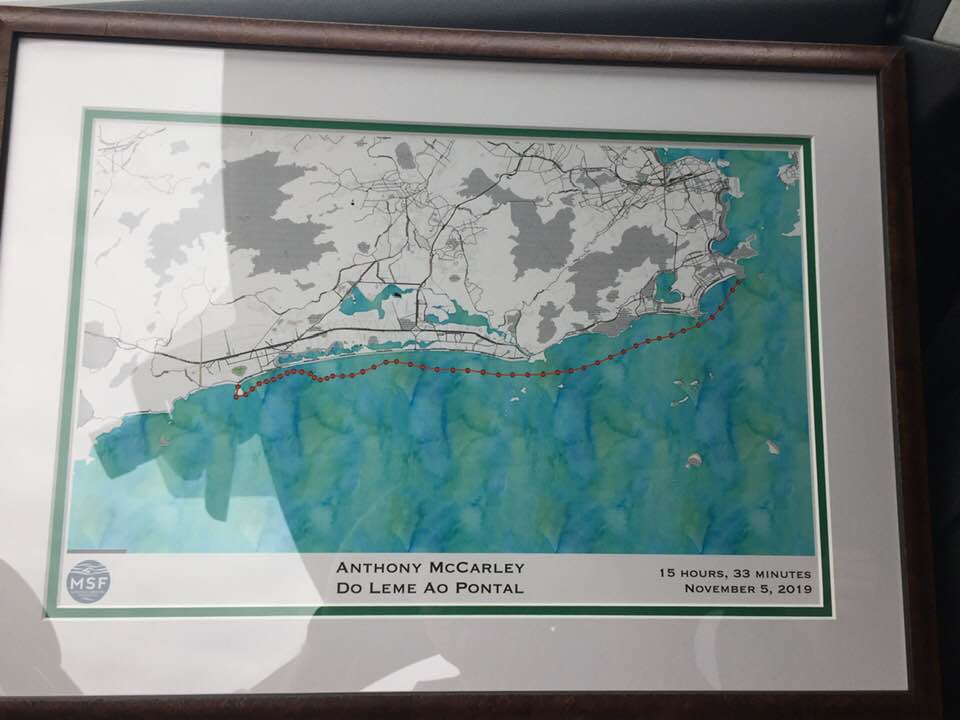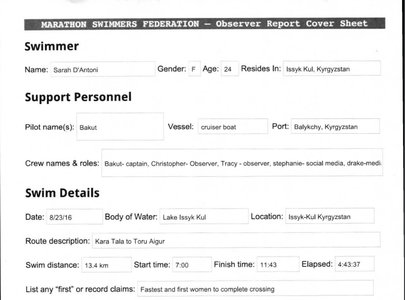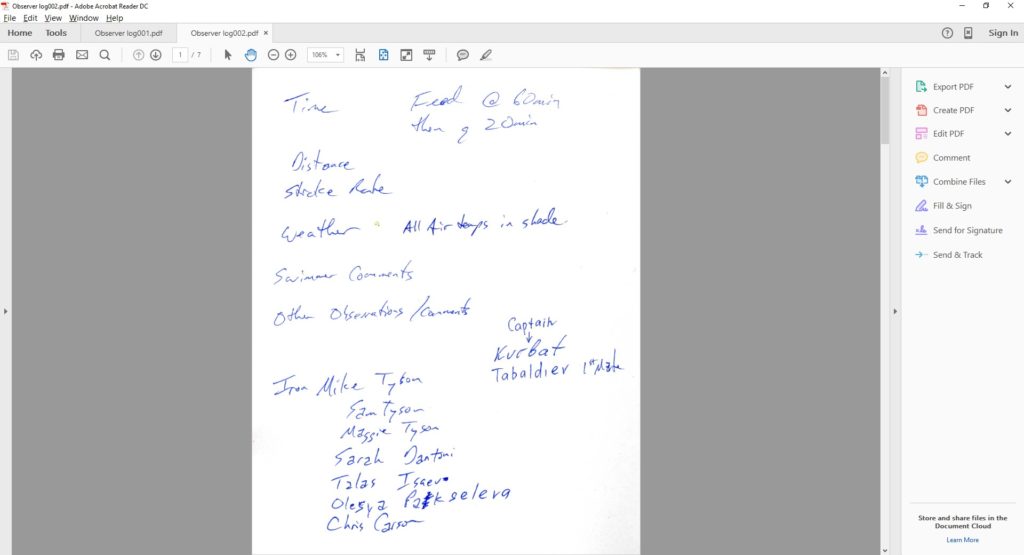Training for a “big” swim (quotes because this swim isn’t big in the grand scheme of things) takes a lot of training. However, not all of us have a standard job with consistent hours; not all of us have the time to swim 2+ hours, five days a week and 4+ on Saturday and Sunday; not all of us have understanding families (I do, just saying that not all of us do); not all of us have ready-access to a year-round pool; not all of us have access to a close-by open water location. With the exception of the understanding family, I fall into all of the other not all of us‘s I mentioned above.
Time horizontal. Dear reader(s) of my blog know my history with respect to time horizontal and open water race success. This need for time to get my lower back conditions features highly in my thoughts when training for something that I know will take me many hours to complete. It did for Issyk Kul, as well. Only problem was how busy I found myself this year. I was lucky in so many ways, with my big boss giving me access to her pool during work hours, AND having an understanding immediate boss who gave me time off work to swim. Despite that, the longest swims I managed were 1:40. I did a bunch of those. But still, I rarely had a week where I could leave work to swim every work day. In fact, I just looked at my logs. I didn’t have any weeks where I went everyday. I had a few weeks were I swam four times. As I mentioned elsewhere, I had only one week where I swam the equivalent of what I thought would be my time for the Issyk Kul swim (and for that matter, I thought it would be the maximum time it would take), and that was a week where I swam a total of 6:03, to include my one and only two-hour swim this training season. (Whoa…that’s scary. I swam the Issyk Kul crossing in 6:02.45…insert Twilight Zone music here.)
Outdoor pool open! Once the weather got nice I had my outdoor pool cleaned and filled. I got a significant number of swims done in that pool (still on straps of course), but it wasn’t easy. Bishkek is surrounded on the south by very large mountains, and quite often in the late afternoons summer storms would roll in. Now, this place doesn’t get much lightning. But that doesn’t mean I don’t freak out when those dark storm clouds roll in, and I’m swimming in a pool next to a bunch of out-buildings with metal roofs. Let’s just say I got a lot fewer after-work swims in than I would have preferred.
Indoor lap pool, no. I’ve talked before about the one nice and close indoor pool here. They’ve still got the noodler babushkas in there, along with the two-lanes-turned-into-three really skinny lanes. I’ve used that pool a few times, before I got access to The Boss’s indoor pool, but it was just so annoying to have to swim around folks who really don’t understand lap swimming, and then to have to do it in what amounted to a lane that is about 60% the width of an ordinary lap lane. Frustrating.
Swimming on straps. Will not make you faster, or even allow you to keep your speed, no matter how many times you do “100 strokes fast, 100 strokes slow, 80 fast, 80 slow…” It will, however, get you in the pool and get you time horizontal. Only a couple of times during my swim did I think “Oh, was that my lower back starting to hurt?” But then I didn’t think about it again for hours. (And it never hurt in the days after.) That’s pretty good when you consider this swim was the longest I’d swum, ever. Six hours is an hour and 15 minutes longer than the longest I’ve ever swum (Swim the Suck) and 2:20 minutes longer than my longest ever pool swim (3:40 for a 10,000 meter swim years ago). But my speed has definitely declined.
Speed. The last race I had was Raslina 5K in Croatia in July 2015. 1:52 and some change. Like I said in the post race report, that 5K was the best I’d ever felt in a race and I was kicking it in the high 80% effort the entire time, to include quite the kick at the end. And it is still slower than I think I could do. I prepared for that race by doing the fast/slow thing described above. But that didn’t matter. When I get to Moscow and back to that pool I know (and love), I’m going to start working on intervals, and get back to working on my critical swim speed again (thank you Swim Smooth). I know I can get myself back to 3200-3300 meters per hour, but I’m sure right now I’m closer to 2700m per hour in the pool. That’s quite a drop that I don’t think can be explained away by age. (I just did some math. Interestingly, my average hourly rate for Issyk Kul was 2297 meters, and that includes stopping 3 times per hour for feeding (I kept those short, but still that adds a couple minutes of not moving per hour). My hourly rate in Raslina with absolutely no stopping was 2680 meters per hour. Not too bad when you consider it was almost exactly a year between the two events and Issyk Kul was at a much greater elevation (5270 ft) than Raslina (21 ft).)
Elevation. How to train for a swim at a mile elevation while you live at less than half a mile elevation? I really thought this one through. I cannot be totally sure that last year’s attempt wasn’t somewhat affected by the altitude (in addition to the other issues). I searched ultramarathon runner forums for my answer. Apparently, if you’re unable to train at a higher elevation, the best thing to do is to either a) travel to the location and do your event within the first 24 hours, or b) travel to the location 3-4 days early to get acclimatized. For Issyk Kul, we arrived at 4pm on Tuesday and I started the swim right before 7am on Wednesday, so that’s within the first 24 hours. It must have worked, yes?
Open water. I had grand plans to run to the lake every other weekend starting in late April to get some open water swims in. That didn’t happen. I did, however, get two quick trips to the lake about a month prior to the swim. One was a quickie, maybe 10 minutes. The other, though, was a nice hour-long swim in 18C water, which was perfect. It was also an hour in the exact location that I planned to (and did) complete the swim, so that was nice, especially as I’m swimming to the end of my Issyk Kul swim and I’m seeing the same trees leading me to the beach. Mentally gratifying.
























